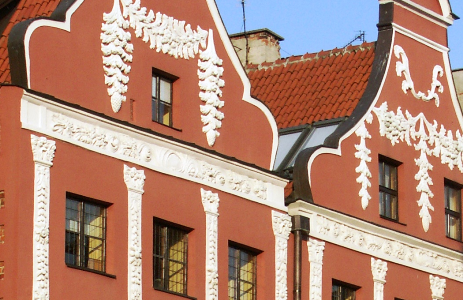Toruń’s lesser known gems
If you managed to visit all the must-see spots of Toruń, the following list of less obvious curiosities might come in handy for you. Together, they come into one, unique theme walk of all the misteries of our city.
Enjoy.
1. Kępa Bazarowa
The island is located on the left bank of the Vistula, opposite the Old Town
You can talk about ladies of the night in different ways, but only 16th-century poetSebastian Klonowic did it with such grace:
You will soon see the bridge and the island in front of you;
There, you also wanted to go
You will find your fearless, two-legged doe,
Mr Hunter
Arriving in Toruń, the poet passed Ostrów Mostowy, today called the Kępa Bazarowa; or sometimes – Małpi Gaj (Monkey Grove). This is one of the many former Vistula islands, with most others gone since the river’s regulation in the 19th century. The first name recalls the bridge connecting Toruń with the Kuyavian shore of the Vistula. Established in 1500, this wooden crossing consisted essentially of two bridges: the longer section from the city to the island was called „German”, and the „Polish” bridge ran onwards to Kuyavia. The proximity of the bustling city favoured economic activity on the island, hence its name recalling the Bazaar, when traders heading for the city stopped here. It was a place outside the guilds’ jurisdiction, so manufacturers not part of these associations operated here, bungling their work to the chagrin of the certified Toruń craftsmen. The island also used to be a place of harlotry, and if Klonowic described these ladies as “deer”, others saw them rather as monkeys. Located almost in the centre of Toruń, over 30 hectares of it is today a nature reserve in which the alluvial forest, the habitat of the white-tailed eagle, is protected. From the vantage point on the island you can admire the most beautiful view of the city. Once bustling, today peaceful, it was also a place where history, writ large, played out: it was here that in 1411 the peace of Toruń was concluded.
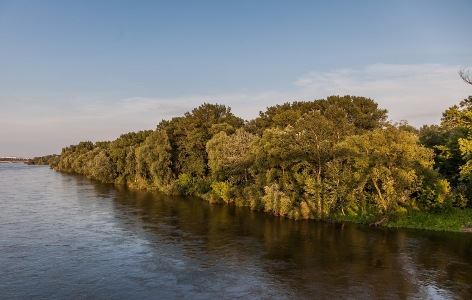
2. Tuba Dei
The Cathedral of St. John the Baptist and St. John the Evangelist, 16 Żeglarska Street
Although difficult to believe, huge things can be hidden. Many visitors of Toruń may not even realise that in the tower of its Cathedral hangs the largest medieval church bell in Poland. It is rung only a few times a year and thus easily missed. Cast in 1500, „God's Trumpet” was probably the answer to the great Gdańsk bell, called the Grace of God. Because the rivalry between these cities was manifested in many fields, it can be assumed that these huge instruments marked the celebration of the Great Jubilee Year. The Tuba Dei weighs about 7300 kg. Interestingly, it is one of only seven surviving large free-swinging church bells. The bell-ringers must climb on a special platform, rhythmically rocking its edges, slowly setting the giant bell in pendular motion. Over the years, many legends and conjectures have sprung up around the Tuba Dei. According to one of these stories, to move the bell to its belfry, a half-kilometer-long ramp was built over which twelve oxen climbed above the roofs of the city. Another legend mentions the great anger of God, who in the year 1500 decided to end this world. Appeased by the sound of the instrument, He changed his plans. The attachment of the people of Toruń to the Trumpet was expressed during the Swedish occupation, when theypaid a contribution, saving the bell from a forced journey north. Other bells were not so lucky. Still today, two bells looted from St. James’s church in the New Town chime in the cathedral of Uppsala. One of them is called Thornan (Torunian), leaving no doubt as to where it was procured.
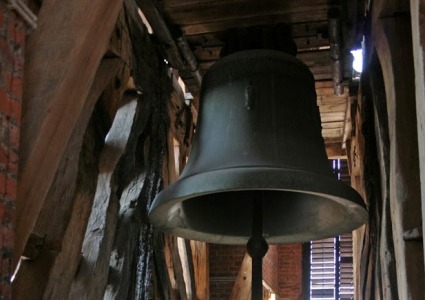
3. Wall paintings
ul. Szeroka 16, Szeroka 22, Szczytna 2, Szczytna 15
Since 1997 the Old and New Towns of Toruń, together with the ruins of the Teutonic Castle, have been included in an exclusive group of monuments of World Heritage Unesco List. Well-preserved net of alleyways and monumental architecture of, above all, the Old Town Square, have influenced the decision of the committee. Although monuments are easily noticable, the unique feel of the city is hidden mostly in places which are not usually expected. A simple visit to a supermakert of Szeroka street, a visit to a nearby bank or a dinner in a restaurant on Szczytna street is enough to prove that. All of these places have wall paintings from XIV and XV century on open display. It can be confirmed that every second house or more in the Old Town area are of original gothic architecture. As the time went by, the houses have been rebuilt - which is why in many seemingly ordinary buildings there are pieces of art more expected to be encountered in castles and churches. Polichrome ceilings, paintings, doorways, cupboards, graphite washbasins, and, last but not least - floor heating systems. Listed like that, they are still merely a fragment of all. Tens of Old Town buildings hide similar revelations. The strenght of auntenthicity makes the residents' morning routine of going to a bakery seem like an non-existent problem. They will surely both go, only to once again take a good look on court life scenes painted on the walls centuries ago.
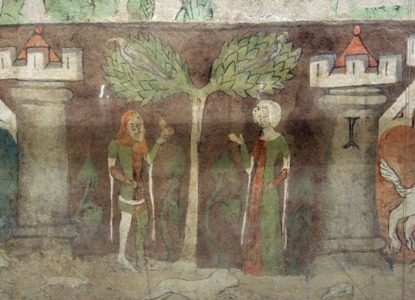
4. Anna Wazówna
Church of the Assumption of the Blessed Virgin Mary
The famous Zygmunt, standing on his column in front of the Royal Castle in Warsaw, who so riled the Cracovians that he is still recounted today in ugly rhymes with himself in the lead role; this king had a sister. Unfortunately, bad luck persecuted her in her life as well as after her death. First of all, Anna never found a husband (which some women may consider lucky). She was also as wise as she was ailing. It is to her that we owe the first Polish herbarium, as well as the promotion of tobacco in our lands. Well-trained in botany and speaking several languages, she kept potential marital candidates at bay until the grave. And while we’re on the subject, it's time to mention Anna's posthumous adventures. Initially, she was buried in Brodnica. Despite her semi-Swedish roots, the Swedish army did not spare her coffin whenthey plundered Brodnica in 1629. The preserved lively diplomatic correspondence indicates that the Swedes rather blamed the Poles for the desecration of corpse, which saw the dead princess relieved of her family jewellery. It was not until eleven years after her death, in 1636, that the nephew of the queen, Władysław IV, arranged a fitting funeral for his aunt in Toruń. Anna's protestantism was the reason why she could not be buried in another „attractive” place – preferably atWawel. Thus, the choice fell on Toruń, which, along with other large Prussian cities, belonged to the „heretical” elite. The queen was buried in a mausoleum added to the presbytery of the post-Franciscan Church of the Blessed Virgin Mary, then a parish church serving the Old Town Lutherans. The belated funeral, along with the obligation to bury the dead, was also a great opportunity for political demonstrations. Following the king's orders, during the ceremony no reference was made to Anna's Polish roots. Even today, a skilled eye will not spot Polish features on the portal leading to the mausoleum.
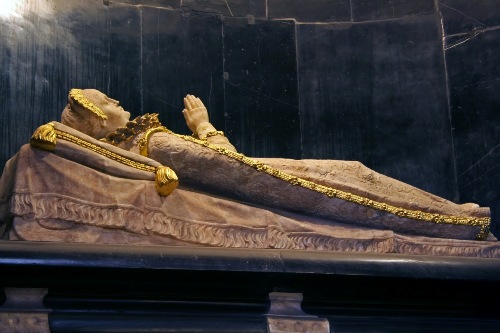
5. Old Town City Hall
1 Rynek Staromiejski (1 Old Town Square)
Placing the Old Town Hall among the lesser-known sights may seem surprising. However, it will not surprise anyone who is asked by a tourist about „the church” standing in the square. Such a question may gripe proud Torunians, and result, in the best case, in an indulgent smirk. However, one can fully understand the association, and even second that opinion. Indeed – the Old Town Hall recalls a dignified temple. And it was this „urban castle” that was the best showcase of the powerful patricians, conscious of their assets. The four-wing edifice, similar to the town halls of Siena and Florence, is in fact a multifunctional building. On the one hand, the town hall – the council house, the centre of power, but also a trading house (cloth hall), bread shop, market, court, weigh house, archive, handy arsenal, and even a wine shop with taverns: its cellars, partly under the courtyard, served as a liquor store and pub. Importantly, the merchants’ house belonged to the commune from the very beginning. It must have made an even bigger impression before 1703, when the Swedes, whentheybombed the city, took down a ten-meter-high helmet-dome that crowned the tower. The building burned down and reconstruction did not start for years. It is also worth remembering that Jan Olbracht, the monarch, who definitely liked Toruń, died here on 17 June 1501. According to a moving request, his heart was walled inside a pillar of St. John’s Church. In truth, however, all of the king’s other innards were also brickedupthere alongside his heart, which should be explained more through hygienic considerations than through a special love between the city and the king.
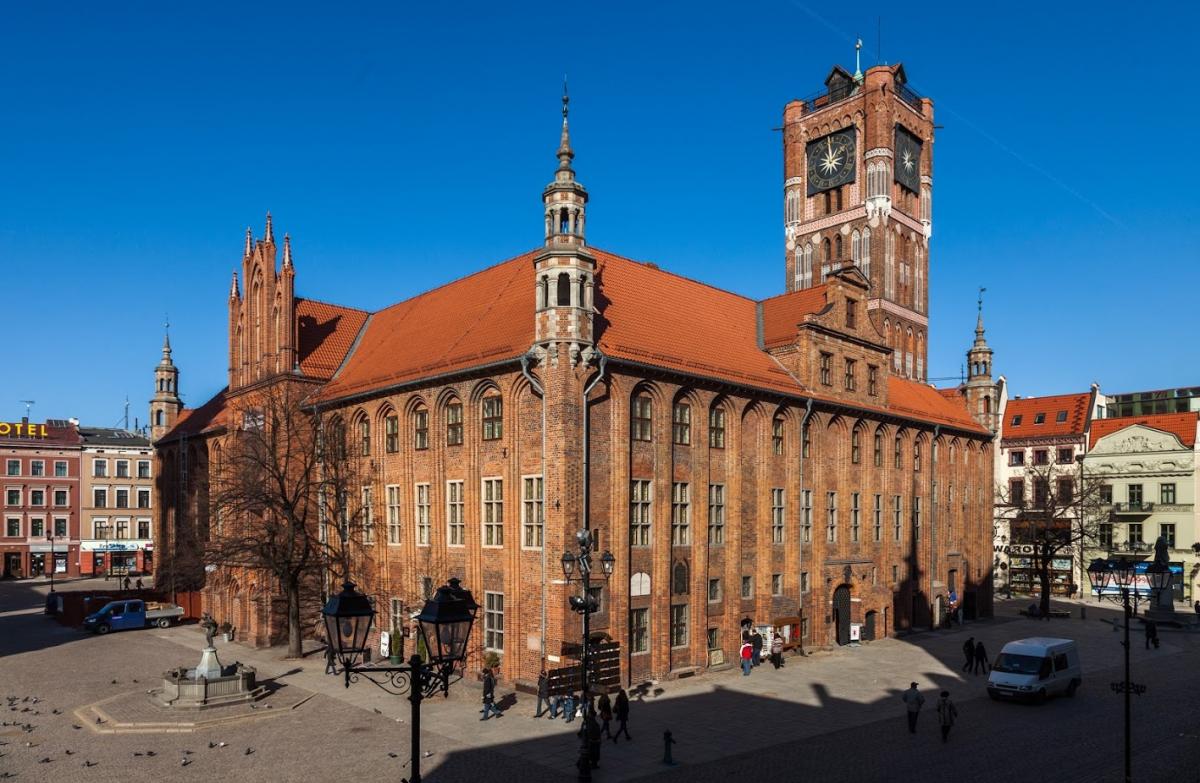
6. Sömmering
33 Rynek Staromiejski 33 (family home)
Every child knows who Copernicus was. And every youngster entering the world of temptations and addictions should know who Samuel Tomasz von Sömmering was. Today, smokers know very well the amount of good reasons to fight their addiction, with each package warning them of the increased risks of many serious illnesses, but it was Sömmering who first recognised that smoking kills! Born on 28 January 1755, son of a city doctor, he was interested in anatomy from an early age. As a teenager, he assisted his father during autopsies. After graduating from secondary school in Toruń, followed by the university in Göttingen, he became known as a man of many talents and interests. The German press extensively discussed the galvanic telegraph he was working on, which, although not the success he expected, would be perfected by other inventors. In those times, when blacks were seen as creatures closer to monkeys than to humans, Sömmering was totally involved in research, the fruit of which is now considered „the most obvious obviousness’. He studied dozens of corpses of black slaves brought to Europe, proving beyond doubt that they were human. He also conducted research on the brain and spinal cord. Despite his multitude of duties, he did not neglect his social life. It's enough to add that Goethe became one of his friends. He was associated with Freemasonry – especially withRosicrucianism, which allowed him to explore „secret teachings”. This well-known forgotten Torunian lent his name to a crater on the moon and to a species of African gazelle.
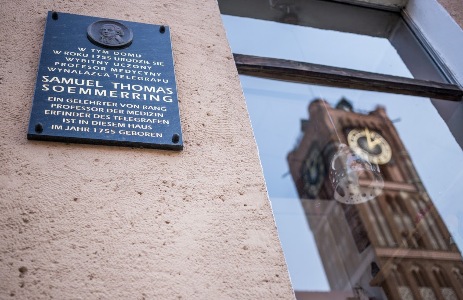
7. Modry Fartuch (The Blue Apron)
8 Rynek Nowomiejski
Torunians maintain that this is the oldest and continuously operating European guest house. According to others, the oldest European inn can be found in Madrid. In order not to spoil the moods of local patriots with arguments and details, it suffices to say that the first guests were accepted here in 1489. Among the more well-known who came here for beer, we can mention Jan Olbracht, Jan Kazimierz, and Napoleon Bonaparte – though it has been maliciously stated that if the Emperor had really visited every inn he’s been claimed to, he would not have had the time to conquer the continent. Anyway, he really did visit Toruń and he had to drink somewhere. It is also true that throughout its history, the building did not have any other functions than those of a pub/guest house. The only break occurred during World War II, when ModryFartuch was totally gutted, leaving only its walls standing. For decades, the business belonged to the respected Szalit family. „The Blue Apron” also appeared in the famous „Polish western” The Law and the Fist from 1964.
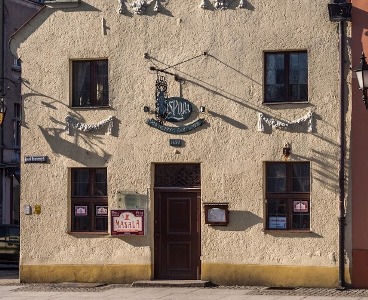
8. Kalischer
46 Szeroka Street (place of residence)
Many Polish cities can boast rich Jewish traditions and even numerous souvenirs of their presence. The opposite is true in Toruń. As compensation for these shortcomings, one can mention one of the greatest Jews ever to walk the earth. The Jewish community has never been a sizeable group in the city. From the beginning, in the times of the Teutonic Knights, Jews were forbidden to settle in Toruń and other Prussian cities. This does not mean, however, that Jewish merchants did not penetrate these areas. On the Kuyavian shore of the Vistula, then a part of Toruń for onlyseveral decades, they successfully settled in the 15th century. Born in March 1795, Zvi Hirsch Kalischer was the rabbi in Toruń for 50 years. For as long, if not longer, he was married to his wife, which resulted in fourteen children, almost all of whom grew up to be well-known and distinguished citizens. The author of Seeking Zion, he expressed the need for Jewish settlement action in Palestine more than twenty years before the birth of Herzl. To this end, he even talked to the Rothschilds, suggesting that they would buy Palestine from Muhammad Ali. In 1860, at the initiative of Kalischer, a congress of rabbis met in Toruń, which decided to establish an organization of Lovers of Zion. Thus, although there are no monuments associated with Jews in the city, the first Zionist religious thinker in history was a Torunian.
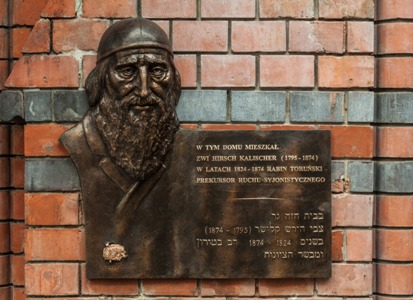
9. Szymborska / Herbert
37 Grudziądzka Street, 18 Mostowa Street
Szymborska or Herbert – that is the question. It can be said that for Toruń this does not matter much: they were both connected to the city. „Well, I definitely want to lend you 300 zlotys now and possibly a second 300 in December (...)” wrote Professor Elzenberg to Herbert, when the latter moved from Toruń to Warsaw. The cordial relationship between the student and the master manifested itself not only in practical help. The young poet often visited the professor’s house at Grudziądzka street. Herbert himself lived in several places in the city, among them a house at Legionów Street, a tenement house at Konopnicka Street and the then Student Dorm No. 2. The Faculty of Humanities where he studied was then located at Collegium Maius. „In the stone forest of the cathedral, under the skull of the vault and the sky (...) – with these words a poem begins for which the inspiration lies beyond doubt. The work was created in the choir of the Church of the Blessed Virgin Mary, as the poet wrote in a letter to a friend.
The young Wisława Szymborska, only six or seven years of age, moved with her parents to Toruń. Although among older residents there is no certainty as to the exact address of the future Nobel Prize winner, the majority of tenants of the building at 18 Mostowa Street point to an apartment in the yard where a green door leads.
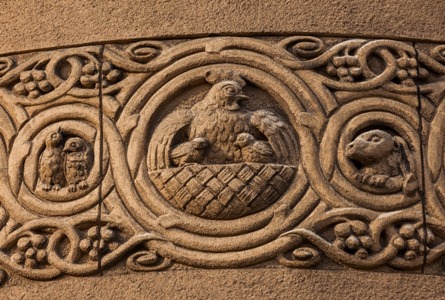
10. Rösner
28 Chełmińska Street (family house)
There are stories of headless horsemen that haunt the moors. Although heather is not lacking in the forests of Toruń – one of the citydistricts is evencalled Wrzosy (Heather) – the spirit discussed here haunts the surroundings of the house where he used to live. Apparently he has been seen in the corridors and cellar of his house, albeit horseless as well as headless. We are writing about about Johan Gottfried Rösner – mayor, resident at the royal court in Dresden, burgrave of Toruń. The reason why the apparition roamswithout his head, or, rather, he keeps it under his arm, are the circumstances in which Rösner died on 7 December 1724. He was decapitated in the courtyard of the Old Town Hall after the verdict of a court of assessors. The mayor was accused of not maintaining order in the city, as a result of which Toruń’s most-famous brawl took place, known as Toruń’s Tumult. A regular dust-up between Catholic and Protestant youths led to several other people dying on the scaffold as well. Despite a realistic chance to avoid punishment – through conversion or an escape from the city, the mayor remained faithful to his convictions, and rather confident in his good relations with the royal court. August II must have had a different opinion on the matter, which resulted in the bloody finale on that cold December morning. The memory of the mayor, a martyr for the Protestant cause, became widespread and inspired artists of all sorts. Several dramas and many other literary works were devoted to him. He was remembered as a thoroughly educated man, but also a hothead, ready to fight with everyone and everything, and so probably his dispute with the Toruń Jesuits contributed to the tragic end of Rösner.
